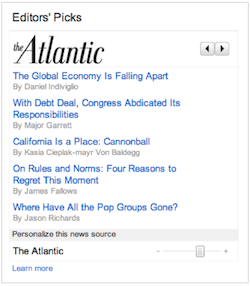Forbes reporting:
I’m pretty obsessed with watching our traffic on Forbes.com....
The image below is one of my Droid’s “home” pages. In the third row, far left, you’ll see my “shortcut” to Newsbeat, a product from
Betaworks. It’s my real-time fix to see which Forbes posts are popping; how consumers are pathing through the site; where they’re coming from on the Web; how deep into the page they’re reading and much more. Next to that is a site-wide report from Omniture (a data reporting service) on unique visitors. It’s great for slicing and dicing our cumulative traffic, by channel and section, every 15 to 30 minutes and on a daily basis, too. Next to that, Omniture page views. I use it much like I do the UV report. And next to that is the mother of all Forbes Omniture stats reports. It updates at 1 am with 23 daily, monthly and annual tables — just perfect for when I can’t fall asleep or I wake up in the middle of the night either excited or worried about meeting our traffic goals.
Like I said, it’s a bit obsessive, but it
is very much part of the new world of digital journalism. Our full-time staffers and contributors each have their own personal dashboard to tell them how they are doing. And, of course, each of their posts has a page-view counter in full public view. Over the last few months we’ve had some technical snafus with the public counter. When we did, our staffers and contributors expressed disappointment. They’ve come to depend on it as a feedback loop and feel somewhat in the dark without it.
Let me be clear… as I’ve said in previous posts, all these statistical reports are meant to inform our journalism, NOT to rule it.
The new content engine we’re building calls for each full-time staffer and each contributor (all topic-specific experts) to be responsible for attracting and building an audience of repeat visitors — that is, loyal readers — around their brand name and their knowledge. Pandering for traffic is not brand building. Winning the respect of your audience is.
To achieve that, journalists and other experienced content creators need to apply their professionalism to the new ethos of digital publishing.
They need to build a bridge from traditional media values to all those traffic numbers.
Frankly, numbers have always been a part of the news
business, and the most renowned media professionals have made their peace with them. I can remember as a young journalist being taken to Abe Rosenthal’s private woodshed, a small sitting area with a black-leather-bound-sofa, to be lectured about accuracy. The next day the infamous executive editor of
The New York Times was planning new “lifestyle” sections to attract more advertising dollars. At
Newsweek, we talked in terms of “subscriber covers” to build the brand and “newsstand covers” to sell copies. At
The New York Herald Tribune, once considered the reporter’s newspaper, similar economic issues were top most on the mind of one of my mentors,
Jim Bellows (the
Trib’s last editor). I can assure you he balanced the needs of that business without compromising his considerable journalistic beliefs. He did so again when he moved on to TV and had to deal with the constant fixation on Nielsen ratings
http://blogs.forbes.com/lewisdvorkin/2011/06/26/journalists-and-statistics-paying-attention-to-the-data-of-a-new-media-world



 That core approach —
That core approach —